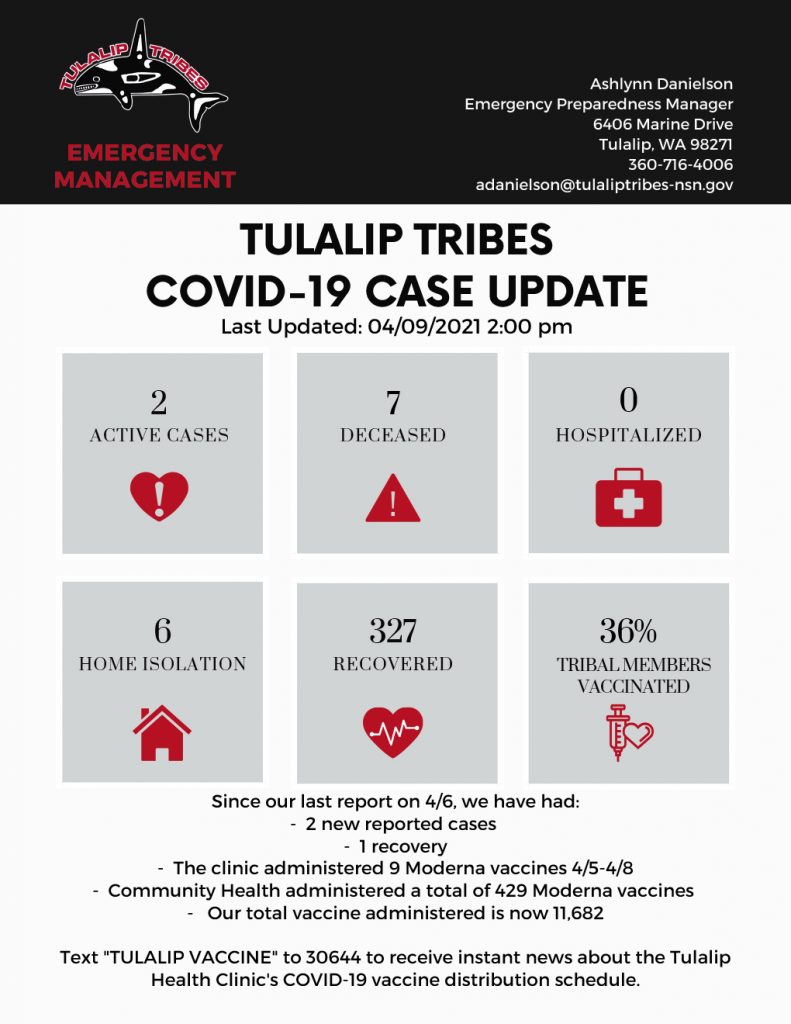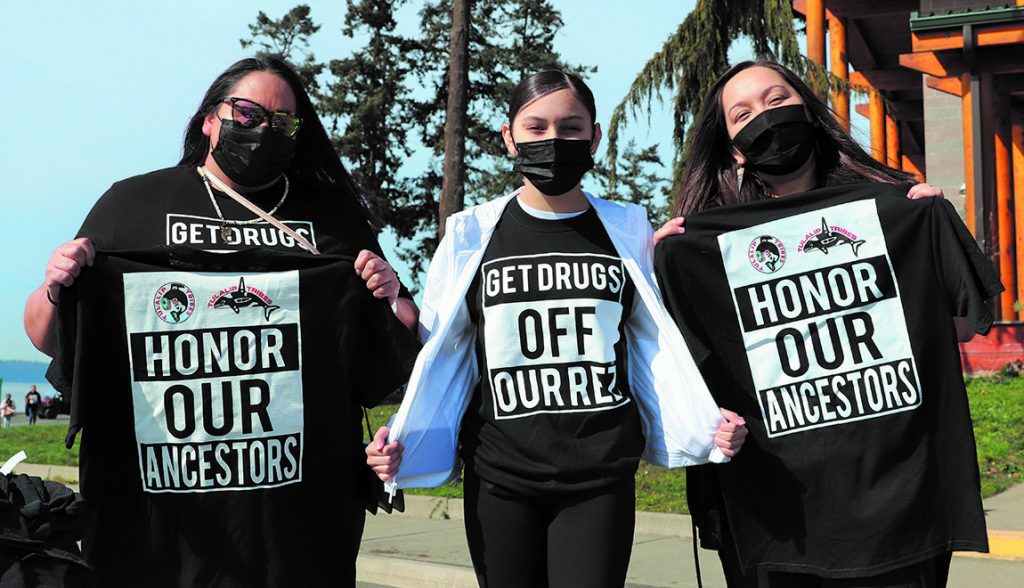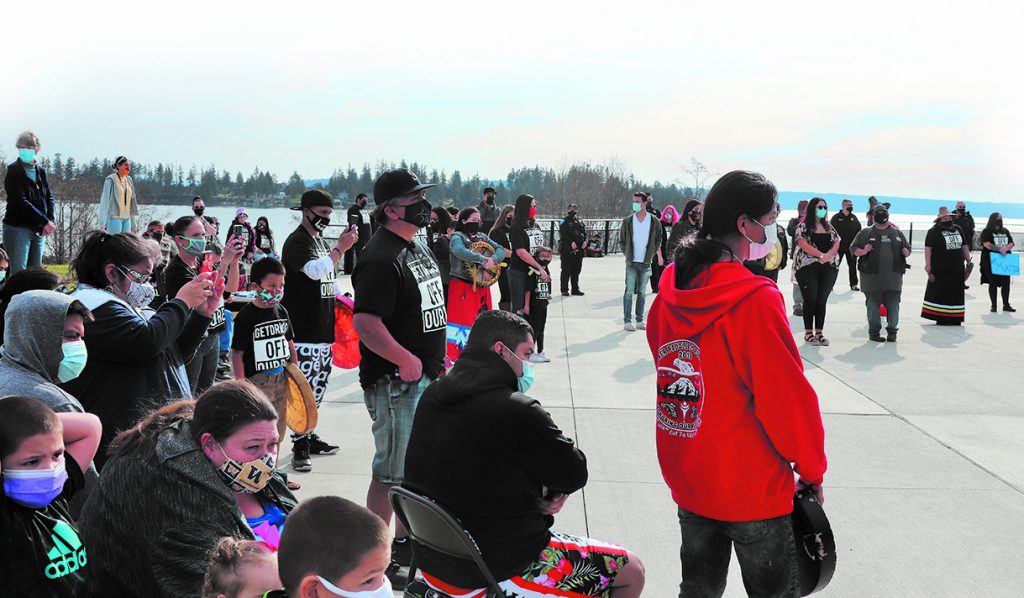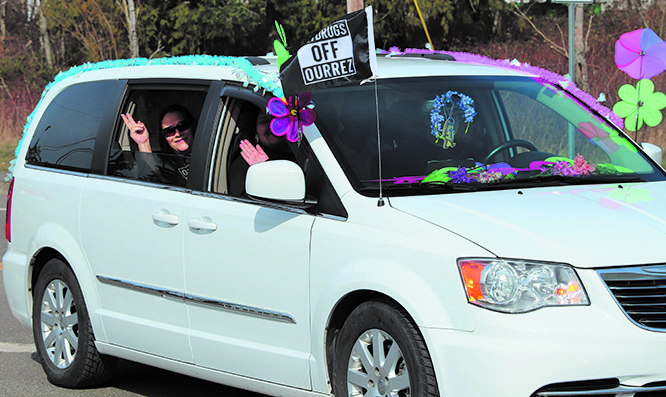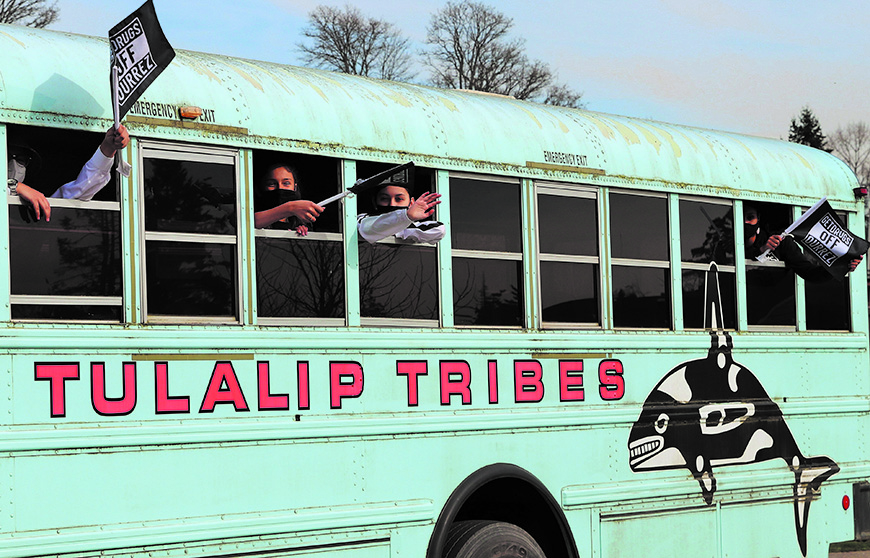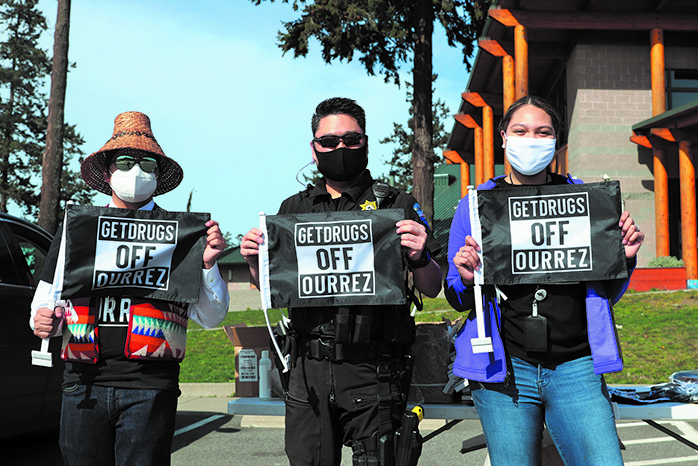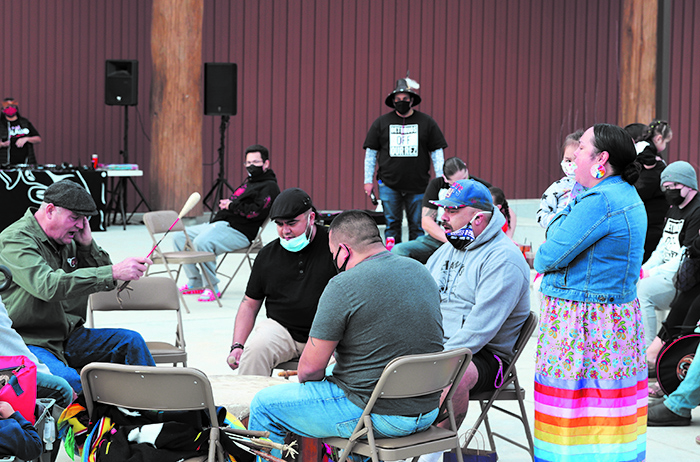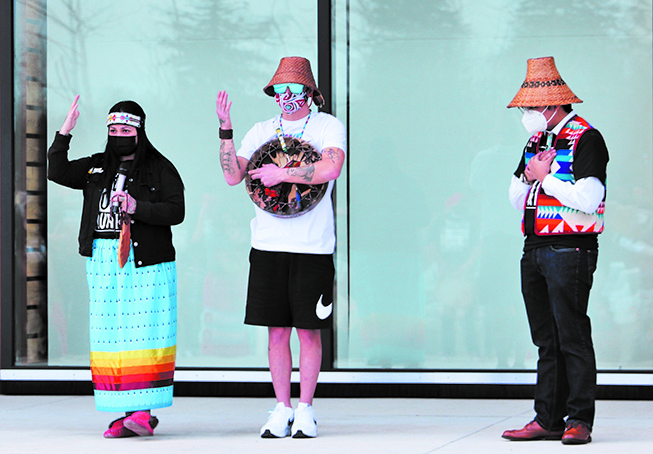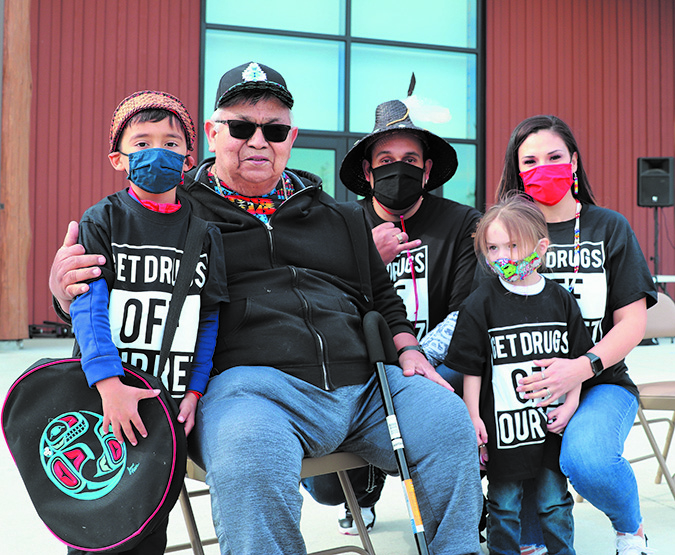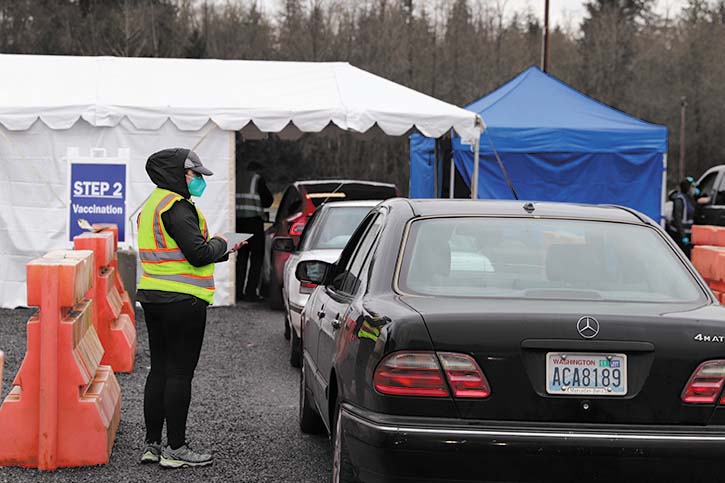
By Kalvin Valdillez, Tulalip News
A partnership between the Tulalip Tribes and the Snohomish County Health District was showcased and executed with the opening of the mass vaccination site at Boom City.
“We were approached by the county, our partners, to see if we’d be able to provide a site for mass vaccination for our whole community. We can’t do this alone. Everyone needs to be involved. Everyone needs to get their vaccine for this pandemic to slow down, so we can really curve that and get back to normal,” expressed Tulalip Emergency Preparedness Manager, Ashlynn Danielson, prior to the site’s opening.
After weeks of planning, the partnership’s shared vision of providing vaccinations to the greater community came to fruition on April 6, when the Health District administered the first round of vax shots to the public. The shots were administered by appointment only and one receiving the vaccine had to meet a number of qualifications to be considered eligible for the COVID defense serum.
The large lot located behind the Tulalip Resort Casino, home to many firework stands during the summertime, is divided into sections by small orange cones, strategically placed throughout the gravel lot to create multiple driving lanes. The site features four checkpoints, designed to keep the patient on-track and the flow of appointments running smooth. During the first week of the site’s opening, patients were in-and-out of the drive-thru style site in under an hour.
On the second day of operations, the Boom City Site Pod Manager, Peyton Plucker, explained the layout of the site. “We’re just kind of bringing people through, getting them where they need to go,” he said. “Through the security to make sure they have an appointment, where we write a number on the windshield – how many people in the car are eligible and have an appointment to get their vaccine. We bring them over to the screening station and we give them their vaccine record cards, so they have proof that they got their vaccine. And they head to the vaccination tent and they get asked a couple more questions there and then get their vaccine. And then lastly, they go to either their 15-minute or 30-minute observation time, and then they exit the property.”
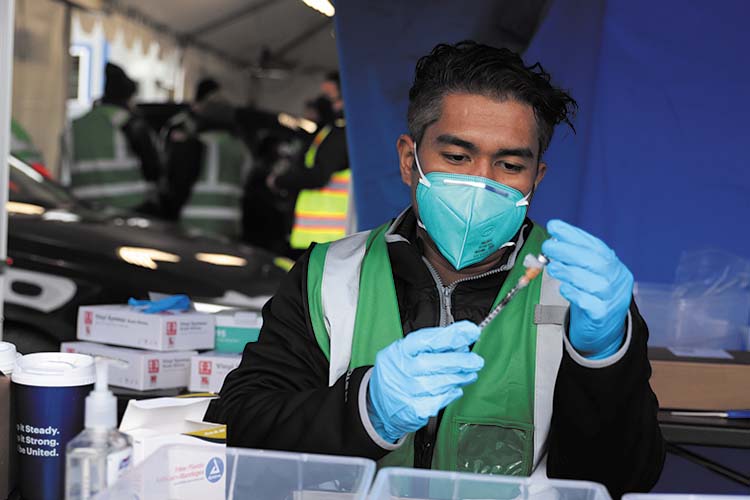
The Boom City location is Snohomish County’s sixth mass vax site and was projected to serve upwards of 2,000 patients a day, depending on vaccine allocation. The planning committee of the site believed the location could easily administer 50,000 doses per week, if and when the vaccine was made readily available.
After receiving her vaccine, Snohomish County citizen, Dynae Ingle, shared her experience at the Boom City site expressing, “It was a really easy process and no wait. It was all on-time and everything went great. At first, I was against getting the vaccine, because of nerves. But I work with the public and I didn’t want to take a chance on infecting other people.”
Unfortunately, due to unforeseen circumstances, the health district is currently not taking appointments at the Boom City site, after only one week of operations. When the FDA and CDC issued a temporary halt on the Johnson & Johnson vaccine due to reported blood clots, that also put a pause on vax distributions at Boom City, as that site was prepared to primarily provide the Johnson & Johnson brand, though they did initially administer Moderna on the first day of appointments.
There are no reported updates about when the on-the-reservation site will re-open, however, other mass vaccination sites are still in operation, where Moderna and Pfzier are offered, including the Boeing Everett Activity Center, Edmonds College as well as drive-thru locations stationed in Arlington and Monroe. To find out more information, such as eligibility, availability and how to schedule an appointment, please visit the Snohomish County Health District website, https://www.snohd.org.


